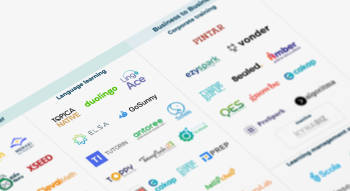The perils and potential of business management tools
Meet Odette.
Odette works for a Singapore-based small business that sells unique batik fashion pieces made in Indonesia. In true small business fashion, she wears many hats at the company, overseeing marketing while supporting the sales and customer service teams.

Odette / Image generated with Midjourney
Throughout Odette’s day at work, she uses different platforms and tools to carry out her tasks. These tools are essential to small businesses, as they help employees work more efficiently.
“Imagine being a mechanic with the greatest ideas but without tools. It will take them forever to bring those ideas to life relying only on manual labor – this is what happens to a lot of SMEs, so having the right tools makes a difference,” says Matts Fievez, Asia-Pacific managing director at Odoo, a platform offering a suite of business management tools.
While these tools do make a difference, too much of a good thing can cause problems. Let’s look at Odette’s day in detail to learn more.
(P.S. Before we go any further, note that Odette and the company she works for are entirely fictional. Any resemblance to real-life people, events, or businesses are purely coincidental.)
A day in the life of Odette
Odette starts her day by checking her email. She’s liaising with some physical retailers in Singapore to see if they’re open to carrying the company’s products. She does that while updating a spreadsheet to keep track of who responded.
She gets a ping on the company’s messaging app, where several colleagues are asking her about the upcoming Summer Sale. The pricing strategy was discussed in a channel on the app, so she has to go dig that out. The marketing plan is up on the shared drive, but for the life of her, Odette can’t figure out where exactly they’ve put the numbers for the discounts they’re doing during the sale – was it shared on the drive or over email?
Then Odette gets an email from the company designer – the marketing collaterals for the Summer Sale are done and shared through a cloud storage platform. She checks on them to make sure they’re looking good.

Image generated with Midjourney.
Odette takes a quick break from her usual work to help with some purchasing tasks – the colleague who usually handles this is on maternity leave, so Odette is helping to manage the bills from international suppliers and ensure the company has the materials it needs for the next collection. These are all on a platform she isn’t familiar with, so navigating it is difficult.
Back to the collaterals – now that they’re done, Odette needs to schedule them using the social media scheduler and set up the electronic direct mailers for the campaign through an email marketing platform. And while she’s thinking about social media, there’s a bunch of messages from customers on Instagram. Someone wants to know if the items really come from Indonesia, and another person is wondering if the Floral Summer Dress will be back in stock in a size L… and it’s all quite overwhelming.
Odette tries to check the inventory management platform, but she can’t figure out how it works, so she messages the person in charge of inventory to ask.
Before she can get back to her marketing, there’s another ping from the founder, who asks if she knows that the intern double-replied a customer with conflicting information about the returns policy because they didn’t realize that Odette had already answered that question via Facebook.
Odette’s exhausted, and it isn’t even lunchtime yet.
Too much going on at once
Odette has a lot on her plate, and the sheer number of platforms and tools certainly doesn’t help. Communicating with colleagues aside, it’s clear that she spends a lot of time tracking down information scattered across different platforms and apps.
“According to BetterCloud, in 2022, businesses used an average of 130 SaaS applications, ” says Fievez. “Most small businesses nowadays run their companies with numerous standalone apps, but they’re not doing so in the most efficient manner.”

Matts Fievez, Asia-Pacific managing director at Odoo / Photo credit: Odoo
A study found that workers toggled between different apps and websites nearly 1,200 times a day, spending almost four hours a week reorienting themselves after switching to a new app. This doorway effect could impact productivity too – how many times have you switched apps at work and forgotten what you were going to do?
Having too many disparate tools can also influence a team’s ability to communicate and collaborate, as well as how they feel about work.
“In the long run, this affects company morale by increasing stress and frustration over ineffective communication and overwhelming workloads,” Fievez explains.
Streamlining the process
Managing these tools effectively is therefore essential. Businesses should streamline the number of apps they use and ensure that their teams are operating on the same platforms – for example, instead of some people using Dropbox and others using WeTransfer, everyone should agree on one service.
Another solution is to find services that provide multiple tools within a single platform. Odoo, for one, offers a comprehensive suite of business management apps that address multiple needs.

Odoo’s dashboard / Photo credit: Odoo
“Businesses can choose and integrate the specific modules they need, making it a flexible and customizable solution,” Fievez adds.
Odette’s company, for example, could leverage Odoo’s customer relationship management, ecommerce, accounting, and messaging tools to streamline its operations.
Additionally, companies should use platforms designed to be as consistent as possible, hence making it easy for users to navigate and minimizing the doorway effect.
“With an easy-to-use, intuitive, and colorful user interface, Odoo is more ‘instinctive’ for workers to navigate,” shares Fievez.

Photo credit: Odoo
For Odette, this means that instead of struggling with the inventory management software and having to ask a colleague for information, she can access details easily because the app is laid out in a similar way as the marketing platform she uses daily.
Odoo also facilitates cross-department collaboration – the finance team doesn’t have to ask about everyone’s bills because it has access to the platform, and each team can easily generate reports about their activities for the company’s founder, thus reducing back-and-forth and data inconsistency.
To a more comprehensive experience
According to Fievez, aligning the tools a company uses is crucial in driving growth.
“With scattered tools and teams operating in silos, businesses often find themselves spending more time on cross-checking or manual approval rather than improving quality of services and strategizing upcoming plans to grow the team,” he says.
Eventually, this leads to delayed decision-making, reduced autonomy, and low morale that ultimately impacts what the company can achieve, he adds.
Taking a comprehensive approach to business management solutions doesn’t just make workers more efficient, but it also makes them happier – and that’s good news for Odette, her co-workers, and the company she works for.
Odoo provides ready-to-use, comprehensive business management tools to support businesses on their growth journeys.
Give Odoo a go by booking a free trial on its website.
This content was produced by Tech in Asia Studios, which connects brands with Asia’s tech community. Learn more about partnering with Tech in Asia Studios.
Recommended reads
 Weekly funding: SG-based Princeton Digital’s debt deal takes top spot
Weekly funding: SG-based Princeton Digital’s debt deal takes top spot Battery swapping faces uphill climb in Singapore’s EV market
Battery swapping faces uphill climb in Singapore’s EV market Tencent sees SEA’s national QR codes as expansion opportunity
Tencent sees SEA’s national QR codes as expansion opportunity VinFast to enter Philippine EV race this month
VinFast to enter Philippine EV race this month Org Chart: The execs stewarding Akulaku’s growth
Org Chart: The execs stewarding Akulaku’s growth Mirxes records $58.7m operating losses and $24.2m revenue in lead up to HK listing
Mirxes records $58.7m operating losses and $24.2m revenue in lead up to HK listing 10 tech and startup companies hiring actively in Asia this week
10 tech and startup companies hiring actively in Asia this week Vietnam, Philippines attract VCs deterred by pricey Indonesian market
Vietnam, Philippines attract VCs deterred by pricey Indonesian market Case study: Transforming team communication in a Southeast Asian telco giant
Case study: Transforming team communication in a Southeast Asian telco giant Why TikTok is at the heart of Shopee’s evolution
Why TikTok is at the heart of Shopee’s evolution
Editing by Jonathan Chew, Winston Zhang, and Dhania Putri Sarahtika
(And yes, we’re serious about ethics and transparency. More information here.)






Be the first to comment!
Comment now